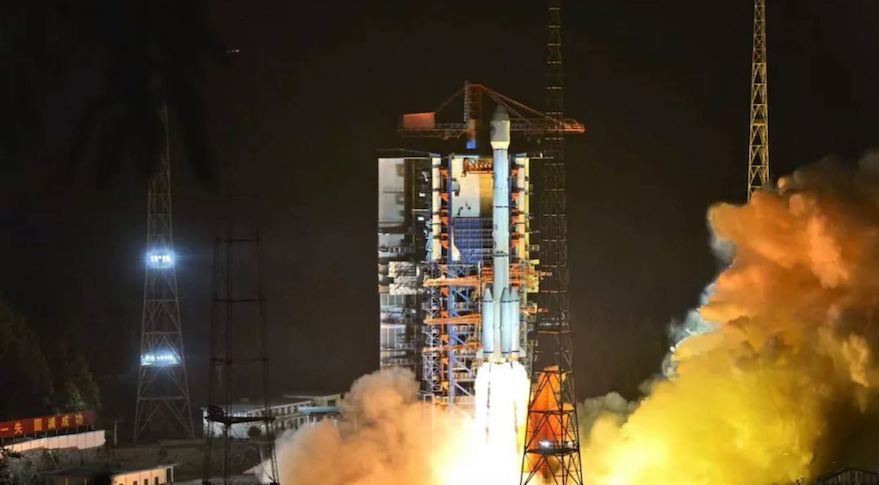China Launches Latest Beidou Satellite for Global Navigation System

HELSINKI — A Long March 3B lifted off from the Xichang Satellite Launch Center in southwest China at 2:09 p.m. Eastern Monday, sending a Beidou satellite toward an inclined geosynchronous orbit.
The launch occurred within a window indicated by the issuance of an airspace closure notice days earlier. Spectator footage provided the first indication of liftoff, with mission success announced by a media arm of the People's Liberation Army just over an hour after launch.
The mission involved the 21st satellite of the Beidou-3 rollout and the second to be placed in an inclined geosynchronous orbit.
Related: China National Space Administration: Facts & Information
Beidou-3 satellites form the third phase of construction of the Beidou Navigation Satellite System, which expands service coverage from regional to global. The new satellites also adopt inter-satellite link capabilities, new-generation rubidium atomic clocks and passive hydrogen maser clocks.
The completed system will comprise of 27 satellites in medium Earth orbits, five in geostationary orbits and three in inclined GEO orbits. The orbits of the latter are designed to form two figure eight loops to provide optimized coverage to China and neighboring countries in the Asia-Pacific.
Chinese press reports tout a variety of uses of the Beidou navigation and positioning system including public security, transportation, fishing, power, forestry, disaster reduction, the construction of smart cities, social governance and more.
Get the Space.com Newsletter
Breaking space news, the latest updates on rocket launches, skywatching events and more!
Significantly, Beidou also boosts the capabilities of the People's Liberation Army in areas including weapons targeting, guidance and other services, notably removing previous Chinese military reliance on U.S. GPS.
The satellite was the 46th launched for the Beidou system overall, with China aiming to complete the positioning, navigation and timing constellation in 2020. China has also established a continuous global monitoring and evaluation system for Beidou with more than 20 ground stations across the world.
Launch schedule challenges
Monday's launch was China's 11th orbital mission of 2019, a number which includes the country's first sea launch but also two failures, one of which was suffered by an emerging private space.
At the start of the year the China Aerospace Science and Technology Corporation (CASC), the main contractor for the space program, stated it would aim to carry out more than 30 launches in 2019. However a Long March 4C launch failure last month could impact a number of planned Long March 4C and 4B launches, including the joint China-Brazil CBERS-4A resource monitoring satellite.
Also of concern is an apparent delay to the return-to-flight of the Long March 5 heavy-lift launch vehicle, which was stated to launch mid-July carrying a large, experimental communications satellite. Indications are that the launch has slipped, with no new target date or update of the situation having been issued. The Chang’e-5 lunar sample return mission, the following Long March 5 mission slated for December, will also be affected.
- China's Latest Beidou Satellite Launch Clears Way for Chang'e-4 Trip to Moon's Far Side
- China Just Set New National Launch Record While Putting Up Two More Beidou Navigation Satellites
- Two Chinese Launches in 24 Hours Deliver Pakistan Satellites, Beidou Backup to Orbit
This story was provided by SpaceNews, dedicated to covering all aspects of the space industry.
Join our Space Forums to keep talking space on the latest missions, night sky and more! And if you have a news tip, correction or comment, let us know at: community@space.com.

Andrew is a freelance space journalist with a focus on reporting on China's rapidly growing space sector. He began writing for Space.com in 2019 and writes for SpaceNews, IEEE Spectrum, National Geographic, Sky & Telescope, New Scientist and others. Andrew first caught the space bug when, as a youngster, he saw Voyager images of other worlds in our solar system for the first time. Away from space, Andrew enjoys trail running in the forests of Finland. You can follow him on Twitter @AJ_FI.










